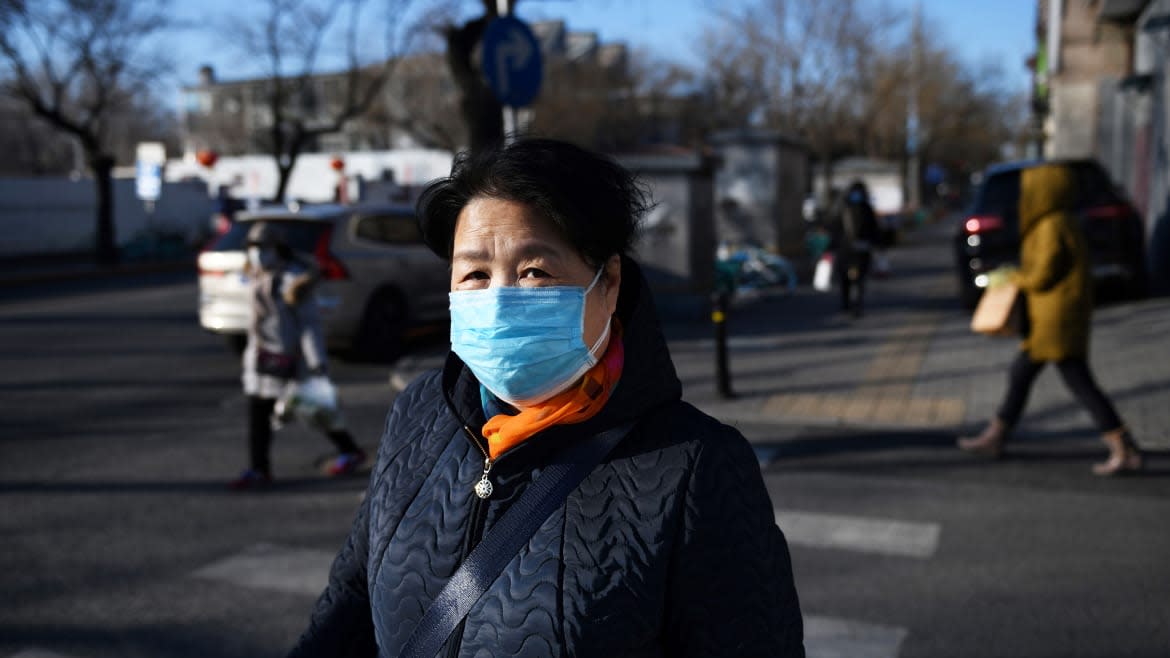U.S. Coronavirus Cases Nearly Double With No End in Sight

Confirmed cases of the new, deadly coronavirus in the United States almost doubled over the holiday weekend thanks to the messy evacuation of Americans from a cruise ship in Japan, while fresh numbers from China suggested the disease might be deadlier than first believed.
The U.S. government evacuated 328 American passengers from Tokyo early Monday on two chartered cargo jets, leaving dozens others behind who preferred to stay on the Diamond Princess cruise ship—despite a strong disembarkation recommendation from the federal government. The U.S. Centers for Disease Control and Prevention said over the weekend that it recommended repatriation so that it could take responsibility for care of the Americans and “to reduce the burden on the Japanese healthcare system.”
All travelers from Japan were screened before boarding the aircraft “to prevent symptomatic travelers from departing Japan,” according to the CDC. But 14 people who ultimately proved to be infected with the disease were included in the evacuation anyway, with officials later explaining that the positive results came back as passengers were already heading to the airport.
Dr. William Walters, managing director of operational medicine at the State Department, told reporters Monday that authorities evacuated passengers without knowing their test results because it was “unpredictable” when the results would come back. None of the diagnosed evacuees were showing symptoms, and they flew home in separate chambers—made of 10-feet-tall plastic sheets—from the other 314 passengers. The government planned to house all uninfected evacuees for 14 days at federal quarantine sites at Travis Air Force Base in California and Joint Base San Antonio-Lackland in Texas.
‘It Failed’: Cruise Ship Coronavirus Snafus Stoke Fears of Global Pandemic
Infected evacuees, on the other hand, were sent to hospitals in California and at the University of Nebraska for treatment. Another five passengers on the flights had reportedly been put in isolation after developing fevers, a development that was likely to add to public skepticism of the U.S. and Japanese governments’ response to the virus, even as officials insisted that the risk to the general American public was still “low.”
Eiji Kusumi, a doctor specializing in infectious diseases at Navitas Clinic in Tokyo, told The New York Times that the quarantine of the cruise ship, which remained docked in Yokohama, south of Tokyo, was an “unprecedented failure” and that officials should “learn from this lesson that a quarantine on a ship is impossible.”
The cruise ship has for weeks housed the largest outbreak outside of China, and Japanese health authorities said Tuesday there were a total of 542 confirmed cases on the Diamond Princess—88 new ones since last count—out of 3,700 passengers and crew members. As of Tuesday, 2,404 people on board had tested negative for the virus.
The vessel-wide quarantine, which began on Feb. 3, was set to end on Wednesday, but those who bunked with passengers or crew members who tested positive were slated to remain on board for longer. Only about 500 people were expected to be released on Wednesday, while more than 100 total U.S. citizens remained either on board or in hospitals in Japan, according to the CDC.
Dr. Anthony Fauci, of the National Institutes of Health, also admitted on Monday that the quarantine on the cruise ship “failed.” After weeks of debate about the subject, Japan said it would test everyone aboard the ship before allowing them to disembark.
Outside of evacuees from the Diamond Princess, the CDC said there remained 15 confirmed cases in the U.S. on Tuesday out of 467 people under investigation for the coronavirus. Some 392 of those patients tested negative, while 60 remained pending on Tuesday. Several Americans who, before being released Tuesday, were stuck in federal quarantine in San Diego after returning from Wuhan earlier this month voiced concern over the effectiveness and thoroughness of the CDC’s response, some going so far as to draft a petition after the government mistakenly reintroduced an infected woman to the general population.
Jacob Wilson, a 33-year-old American evacuee who works at a tech start-up in Wuhan, told The Daily Beast that he and his fellow evacuees were “swamped” by press at the airport after they were released.
“Now hopefully I can get back to some normalcy,” he said.
Meanwhile, as of Tuesday morning, China had reported 72,528 coronavirus cases, including 1,870 related deaths, according to Dr. Tedros Adhanom Ghebreyesus, director-general of the World Health Organization. Outside of China, there were 804 cases in 25 countries, he added, with 12 other countries having confirmed instances of human-to-human transmission.
“At the moment, we don’t have enough data on cases outside China to make a meaningful comparison on the severity of the disease or the case fatality rate,” said Tedros.
But as the Times reported, an analysis by Chinese authorities from data on 44,672 patients suggested that about 2.3 percent of cases of the disease had been fatal as of Feb. 11. Nearly 14 percent of people who tested positive for the infection had severe cases, and about 5 percent had critical illnesses, according to Chinese authorities. The data showed that 30 percent of those who died from the virus were in their 60s, 30 percent were in their 70s, and another 20 percent were 80 or older.
Since then, daily figures indicated the virus’s fatality rate had only increased.
Got a tip? Send it to The Daily Beast here
Get our top stories in your inbox every day. Sign up now!
Daily Beast Membership: Beast Inside goes deeper on the stories that matter to you. Learn more.


